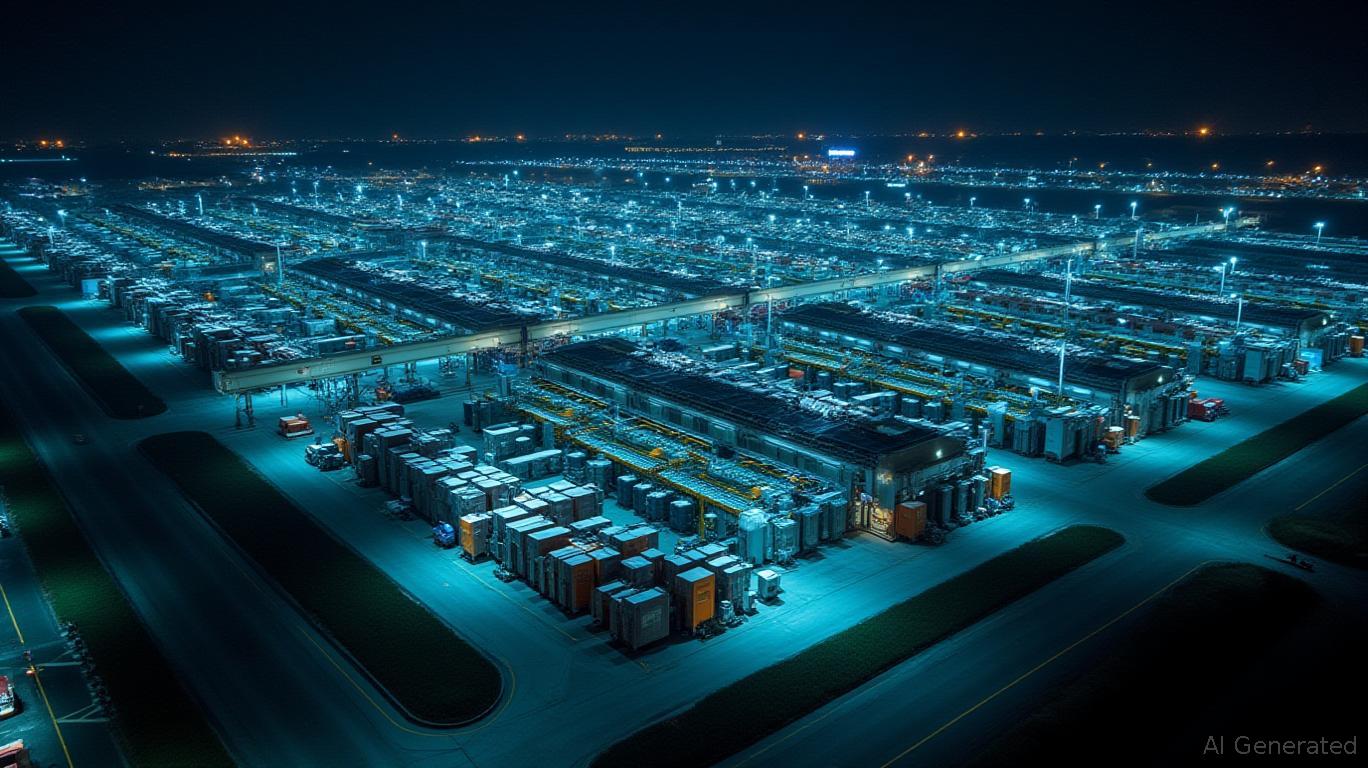FedEx's Strategic Resilience: Navigating Legacy and Innovation in a Dynamic World
In an era where global supply chains face unprecedented volatility,
(FDX) stands as a testament to the power of enduring vision and adaptive strategy. Founded in 1973 by Fred Smith, the company's journey from a bold air-cargo startup to a logistics titan is a masterclass in transforming infrastructure into a competitive moat. Today, as e-commerce surges and sustainability demands reshape the industry, FedEx's ability to balance its legacy with innovation will determine its future trajectory. Let's dissect the pillars of its resilience and the opportunities ahead.The Unshakable Foundation: Fred Smith's Legacy
Fred Smith's 1973 “air-ground” network revolutionized logistics by introducing the hub-and-spoke model, centered on Memphis, Tennessee. This system, which today spans 698 aircraft, 200,000 vehicles, and 5,000 global facilities, remains the backbone of FedEx's operations. Smith's genius lay not just in infrastructure but in institutionalizing values:
- Brand Equity: A relentless focus on “total quality service” earned FedEx a spot among the FORTUNE 100 Best Companies to Work For for over two decades. Employee incentives like stock options and healthcare benefits—even for part-time workers—foster loyalty critical to operational reliability.
- Regulatory Influence: Smith's advocacy for open trade and leadership in industry bodies like IATA embedded FedEx into the fabric of global logistics policy, securing partnerships with governments and corporations.

Strategic Resilience Under Raj Subramaniam
While Smith's legacy provides the foundation, CEO Raj Subramaniam has engineered a pivot toward profitability. The DRIVE initiative (2022–2026) aims to save $3 billion annually by 2026 through workforce attrition, network optimization, and tech-driven efficiency. This shift has stabilized margins, with adjusted EPS rising to $5.88 in Q4 2025—an 8% year-over-year increase.
Key moves include:
- Spin-off of FedEx Freight: Separating its $30 billion less-than-truckload (LTL) division by 2026 will streamline focus on core express and ground shipping, where FedEx's same-day and two-day delivery networks dominate.
- Sustainability Push: Aiming for carbon neutrality by 2040, FedEx has invested $2 billion in electric vehicles (EVs) and sustainable aviation fuel (SAF). Yet SAF adoption remains a hurdle (<1% of jet fuel use), requiring scalable partnerships to meet targets.
Future Growth: E-Commerce, Tech, and Global Expansion
FedEx's adaptability is its greatest asset. To capitalize on e-commerce's rise (projected to hit $7 trillion by 2025), the company is:
- Leveraging Automation: AI-powered sorting robots and autonomous vehicles like the SameDay Bot boost efficiency, processing thousands of packages in minutes.
- Expanding Cold Chain Solutions: Facilities such as the Memphis Cold Chain Centre ensure precision for pharmaceuticals and perishables, a high-margin niche.
- Global Infrastructure Investments: A $350 million Dubai hub, featuring automated sorting and cold storage, underscores its AMEA (Africa-Middle East-Asia) expansion, targeting 45% of the global population.
The fdx platform further integrates end-to-end e-commerce services, offering real-time tracking and returns management—a critical edge over rivals like UPS and DHL.
Risks and Challenges
Despite its strengths, FedEx faces headwinds:
- Labor Uncertainty: Contractor reclassification risks unionization, complicating cost-saving efforts.
- Sustainability Execution: Delays in SAF scalability or regulatory penalties for missed emissions targets could hurt ESG credibility.
- Macroeconomic Downturns: A potential recession might suppress B2B demand, though FedEx's diversified customer base offers some insulation.
Investment Outlook: A Contrarian Play?
Analysts project a $281 price target (vs. $226 in late 2024), citing undervalued assets and a dividend yield of 1.2% (rising to $1.45/quarter in 2025). Key catalysts include Q4 2025 earnings and FY2026 guidance, which will test Subramaniam's margin recovery and sustainability progress.
For investors, FedEx presents a compelling contrarian opportunity. While short-term risks like labor disputes or macroeconomic headwinds linger, its $87.5 billion revenue base and $35 billion in cash provide resilience. A buy rating with a 3–5 year horizon aligns with the company's strategic timeline, particularly for those willing to bet on its ability to marry legacy infrastructure with innovation.
Conclusion
FedEx's future hinges on executing Subramaniam's pivot while preserving Smith's core strengths. Its global network, automation investments, and strategic focus on high-growth markets position it to thrive in an era demanding speed, sustainability, and reliability. For investors seeking a logistics leader with a proven track record and clear catalysts, FedEx remains a stock to watch closely.
Investment thesis: Hold for the long game. The combination of a stabilized financial footing, sustainable innovation, and untapped global markets suggests FedEx is primed for a rebound—if it can navigate its current challenges effectively.

Comments
No comments yet